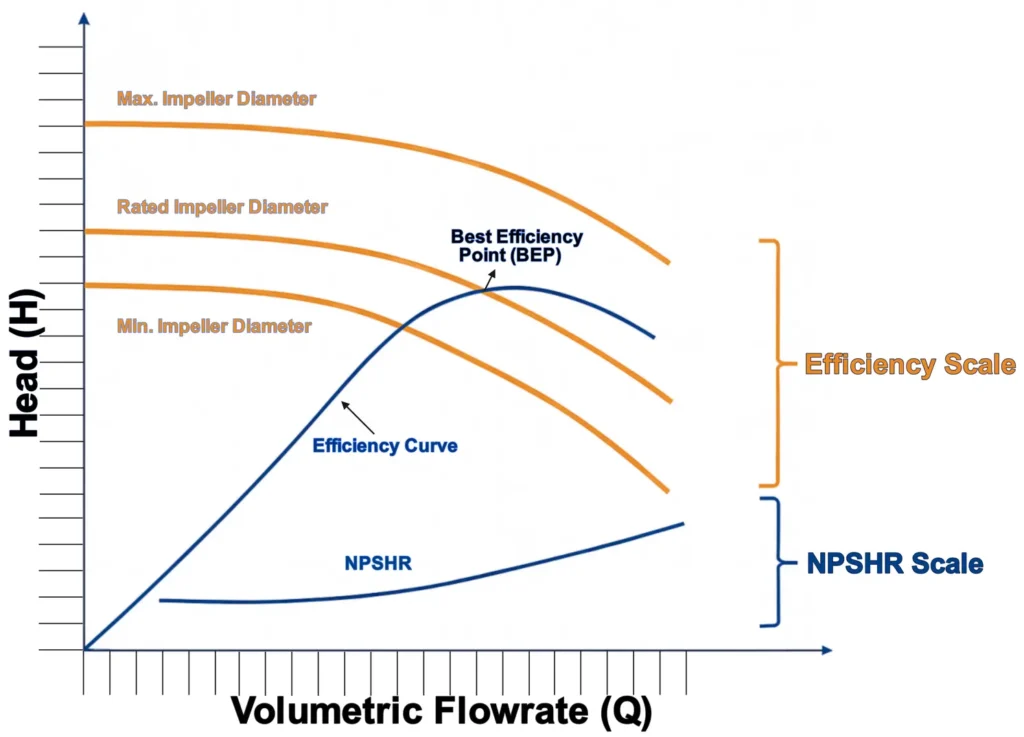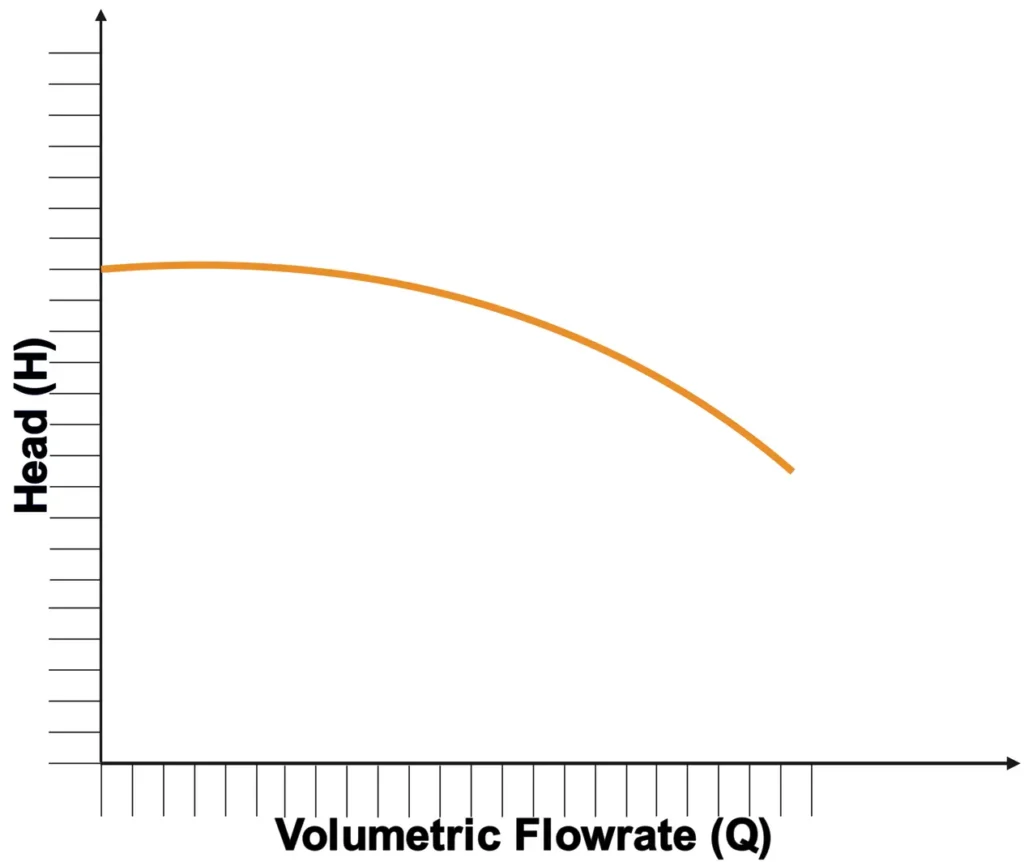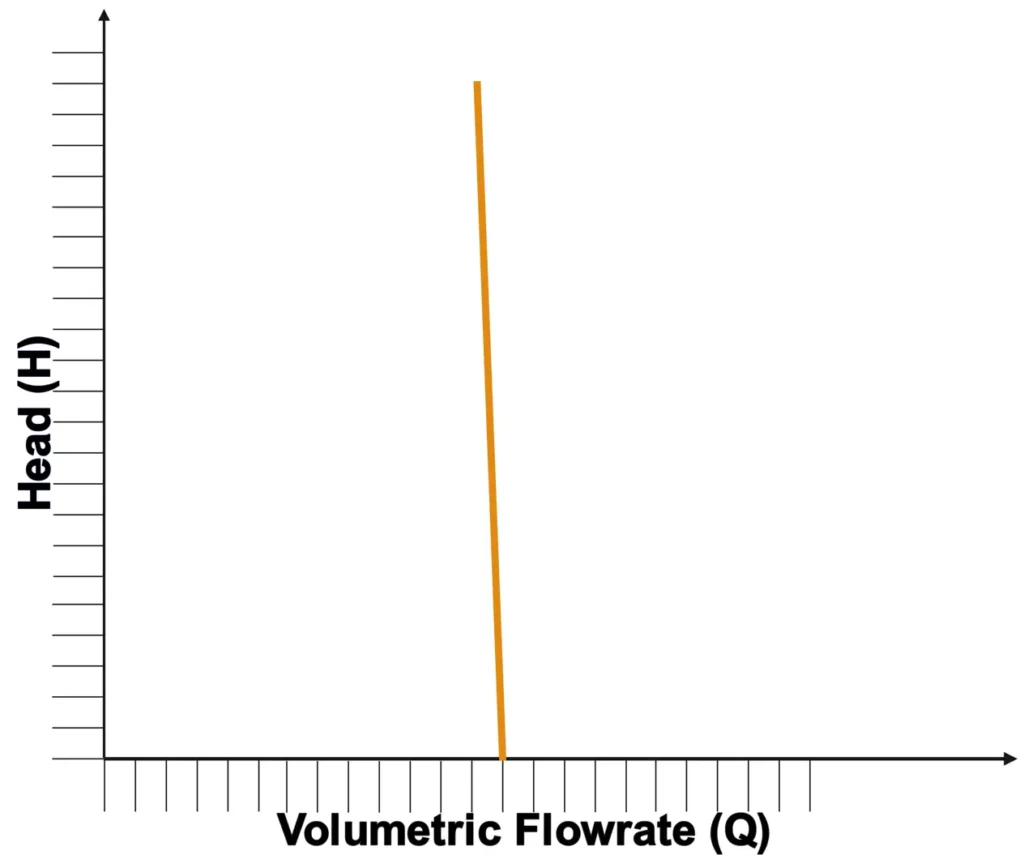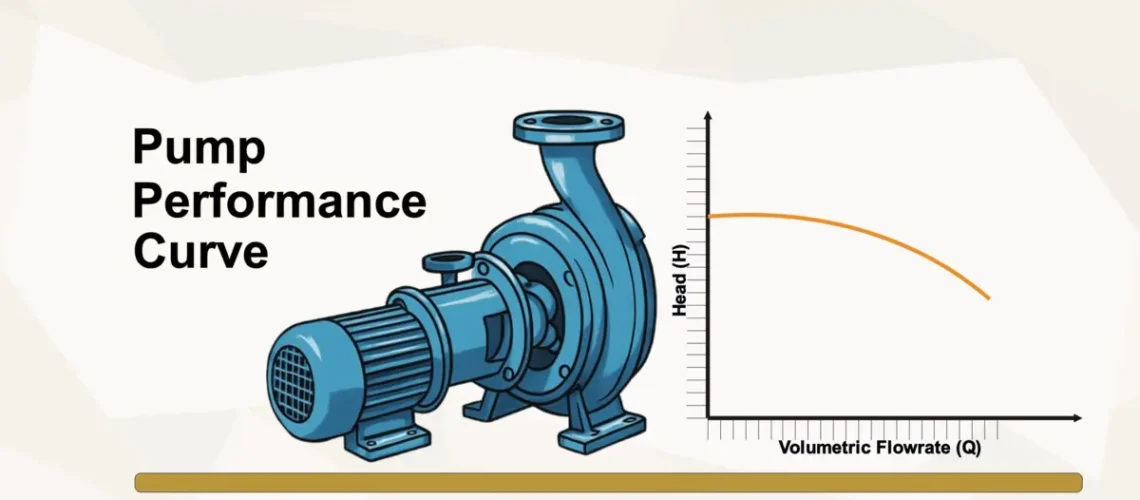Pump performance curves are key to unlocking efficient, safe, and reliable pump operation in process industries. By mastering head, flow, efficiency, and NPSH curves, you can select the right pump, avoid costly issues like cavitation, and optimize energy use. In this blog, we will break down what pump performance curves are, why they’re critical in industries like chemical manufacturing and oil and gas, and how to read them.
What Are Pump Performance Curves?
Pump performance curves are graphs that map a pump’s operational characteristics, showing how it performs across various flow rates, pressures, and power inputs. These curves are the pump’s data, detailing its capabilities and limitations. Whether you’re dealing with centrifugal pumps moving corrosive chemicals or positive displacement pumps handling fixed volumes, these curves help you predict performance, optimize efficiency, and avoid issues like cavitation.
Typically, these curves plot key points like:
- Flow Rate (Q): How much liquid the pump moves, measured in gallons per minute (GPM) or cubic meters per hour (m³/h).
- Head (H): The energy added to the liquid, expressed in feet or meters, representing the height the pump can lift the fluid.
- Efficiency (η): The ratio of useful power output to input power, peaking at the Best Efficiency Point (BEP).
- Power Consumption (P): The energy required to drive the pump, often in horsepower (HP) or kilowatts (kW).
- Net Positive Suction Head Required (NPSHR): The minimum inlet pressure needed to prevent cavitation.
By understanding these curves, you can select the right pump, ensure it operates near its BEP, and keep your system running smoothly.

Why Pump Performance Curves Matter
In process industries like oil and gas or chemical manufacturing, choosing the wrong pump can lead to inefficiencies, safety risks, or costly downtime. Pump performance curves are your roadmap to avoid these issues. Here is why they are essential:
- System Compatibility: They ensure the pump delivers the required flow and pressure for your pipeline system.
- Energy Savings: Operating near the BEP minimizes power consumption, reducing operational costs.
- Safety Assurance: Curves help prevent cavitation, over-pressurization, or mechanical stress, protecting equipment and workers.
- Troubleshooting: Deviations from the curve can signal issues like blockages, wear, or improper sizing.
- Performance Prediction: They show how pumps respond to changes in flow, viscosity, or system resistance.
Types of Pumps and Their Performance Curves
Pumps come in different designs, each with unique performance characteristics. Let’s explore the main types and how their curves behave.
1. Centrifugal Pumps
Centrifugal pumps use rotating impellers to transfer energy to the liquid. Their performance curves typically include:
- Head vs. Flow (H-Q Curve): A downward-sloping curve where head decreases as flow increases. Radial flow pumps have steeper curves, while axial flow pumps show a gentler decline, ideal for high-flow, low-head applications.
- Efficiency: Peaks at the BEP, balancing flow and head with minimal energy loss.
- Power Consumption: Rises with flow rate, varying by impeller design.
- NPSHR: Increases with flow, indicating the suction pressure needed to avoid cavitation.

2. Positive Displacement Pumps
Positive displacement pumps, like piston or gear pumps, deliver fixed volumes of liquid per cycle. Their curves are:
- Flow vs. Pressure: Flow remains nearly constant across pressure changes, creating a near-vertical curve.
- Efficiency: Stays consistent but may drop with high back-pressure.
- Net Positive Inlet Pressure (NPIP): Ensures cavitation-free operation, often defined by a 3% flow loss threshold for reciprocating pumps.

3. Other Pump Types
Pumps like jet pumps (using motive fluid) or air-lift pumps (using gas to lift liquid) have variable curves that depend on design and conditions. Testing is often needed to confirm their behavior.
Key Metrics in Pump Performance Curves
To read a pump performance curve, you need to understand its core metrics. Here’s a quick breakdown:

How to Read a Pump Performance Curve
Reading a pump performance curve is like decoding a pump’s personality. Here is a step-by-step guide:
- Find the Operating Condition: Locate your system’s required flow rate (x-axis) and head (y-axis) on the H-Q curve. The intersection with the system’s characteristic curve (head vs. flow) determines the operating point.
- Check Efficiency: Ensure the operating point is near the BEP for maximum efficiency. Operating far from the BEP increases energy costs and wear.
- Verify NPSH/NPIP: Compare the system’s available NPSH or NPIP with the pump’s required values. A safety margin (e.g., 1.5–2 times NPSHR) prevents cavitation.
- Assess Power Needs: Use the power curve to estimate energy consumption and select a motor that can handle the load.
Example: Suppose you need to pump water at 1000 GPM with a head of 90 ft. A centrifugal pump’s H-Q curve shows it delivers this at an efficiency of 75%, close to its BEP (1100 GPM, 85 ft). The NPSHA (10 ft) exceeds the NPSHR (6 ft), ensuring cavitation-free operation. The power curve indicates a 25 HP motor is sufficient.
Adjusting Performance with Affinity Laws
If a pump’s performance doesn’t match your system, you can adjust its speed or impeller size using the Affinity Laws:
- Flow Rate: Proportional to speed or impeller diameter ratio (Q₂ = Q₁ × (N₂/N₁)).
- Head: Proportional to the square of speed or diameter ratio (H₂ = H₁ × (N₂/N₁)²).
- Power: Proportional to the cube of speed or diameter ratio (P₂ = P₁ × (N₂/N₁)³).
Special Considerations
- Viscosity Effects: Pumping viscous liquids like heavy oils reduces head, flow, and efficiency while increasing power needs.
- Specific Speed: Specific speed defines impeller type and efficiency. Pumps with specific speeds of 2000–3500 offer peak efficiency, while low or high values may reduce performance.
- Cavitation Risks: Cavitation occurs when suction pressure drops below the liquid’s vapor pressure, forming damaging vapor bubbles. Ensure NPSHA exceeds NPSHR, especially for high-speed pumps, and optimize suction piping to minimize losses.
- Entrained Gases: Liquids with gases (e.g., 10% air in oil) can destabilize centrifugal pump curves, reducing head and efficiency.
- System Mismatches: Changes in system resistance (e.g., pipe corrosion) shift the operating point. Adjust pump speed, impeller size, or valves to realign with the BEP.
Practical Tips
- Choose Wisely: Select pumps with curves aligning with system needs. Use axial flow pumps for high-flow, low-head tasks and positive displacement pumps for consistent flow.
- Monitor Regularly: Compare actual performance to curves to detect wear or cavitation early.
- Communicate with Manufacturers: Share liquid properties, gas content, and operating conditions for accurate pump selection.
- Design Smart: Minimize piping losses and ensure adequate NPSHA/NPIPA. Use pulsation dampers for reciprocating pumps to reduce acceleration head.
People Also Asked Questions with Answers
What is the Best Efficiency Point (BEP)?
The BEP is where the pump operates at maximum efficiency, balancing flow, head, and power. Operating near the BEP reduces energy costs and wear.
How does cavitation affect pump performance?
Cavitation causes vapor bubbles to collapse, damaging impellers and reducing head and efficiency. Ensure NPSHA exceeds NPSHR to prevent it.
Why are affinity laws important?
Affinity laws predict how changes in speed or impeller size affect flow, head, and power, allowing performance adjustments without retesting.
How do viscosity corrections impact pump operation?
Viscous liquids increase power needs and reduce head, flow, and efficiency. Correction factors from charts adjust water-based performance curves for accurate predictions.
Top References
- Nesbitt, B. (2006). Handbook of Pumps and Pumping: Pumping Manual International. Elsevier.
- Bloch, H. P., & Soares, C. (1998). Process Plant Machinery. Butterworth-Heinemann.
- Karassik, I. J., Messina, J. P., Cooper, P., & Heald, C. C. (2007). Pump Handbook. McGraw-Hill.
- Girdhar, P., & Moniz, O. (2004). Practical Centrifugal Pumps: Design, Operation and Maintenance. Elsevier.
- Lobanoff, V. S., & Ross, R. R. (1992). Centrifugal Pumps: Design and Application. Gulf Professional Publishing.
- https://www.northridgepumps.com
- https://www.csidesigns.com





